— by Srishti Bhattacharyya
–Reading Time – 30 min Approx
Before leaving the Kulithalai, Sunetra had visited the Kalai Marrum palaipparal (Centre for Art & Creativity) one last time to bid goodbye to Mr. Mitra. While she was there, she saw Mr. Mitra was already talking to a man there. She had decided to wait quietly for Mr. Mitra to finish but he smiled on seeing her.
“Are you ready to leave, Sunetra?” He asked as he approached her after finishing his conversation, “Where are you headed next?”
Sunetra smiled back, “Yes, I will be heading to Andhra Pradesh next. I think it is fair to learn more about another Indian classical dance form, Kuchipudi.”
“That’s great! In that case, one of my friends in Vishakhapatnam, Ambujam is hosting a Kuchipudi dance drama tomorrow afternoon, you should attend it. I will give you his phone number. You can take the address from him,” Mr. Mitra said with bright eyes.
 Sunetra eyes became wide with curiosity and excitement as she spoke. “That’s amazing! Thank you for letting me know, Mr. Mitra, it was really nice of you.”
Sunetra eyes became wide with curiosity and excitement as she spoke. “That’s amazing! Thank you for letting me know, Mr. Mitra, it was really nice of you.”
“It’s my pleasure,” he smiled, “Well, how will you travel to the airport?”
“I will have to rent a cab, my flight leaves at 11:30AM,” she said as she brought out her phone to check the time.
“Nonsense!” Mr. Mitra said, “I am also heading to the Trichy Airport. Come with me if you don’t mind.”
Sunetra was very thankful and agreed to travel to the airport with him.
They set of C. A. C at around 09:30 AM. The car ride took a mere forty-five minutes to drop them off at the airport. Sunetra only replied to if Mr. Mitra asked her anything, apart from that, she put her complete attention on the roads which they took, knowing that she might never visit this beautiful village again.
After bidding Mr. Mitra goodbye, Sunetra went through the security measures at the airport and boarded her flight. The flight was of nearly six hours, so she utilised the time to jot down the major and minute details she learnt about Bharatnatyam and catch up on her sleep.
After landing in Vishakhapatnam, or Vizag, and leaving the airport, Sunetra looked around with a smile on her face. The air had a moist feel to it which reminded Sunetra that she needed to visit the Rushikonda beach.
The hotel that Sunetra had checked in was close to the beach. It was around an hour ride from the airport and by the time Sunetra checked into her room, the clock had already struck seven. She had called Ambujam as soon as she checked into her room, to make her plans for the next day. After greeting each other, Ambujam had informed her that the show was being performed in a theatre which was at a distance of half an hour from the hotel, and was at 12:30 PM. She planned on visiting the beach early morning to witness the sunrise and settled for an early dinner so she could retire to sleep soon.
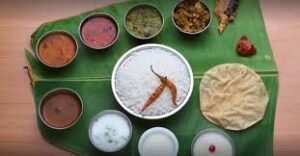 Dinner was a delicious deal. Sunetra had opted to taste the local flavours and had ordered a non-veg Andhra thali, which was named as ‘Dakshin’ in the menu card. The thali included a chicken soup, chicken rice, chicken gravy that came with a side dish of fried prawns, rice, an authentic rasam, and dessert. She couldn’t help but sigh in contempt as she leaned back after finishing her dinner. The unique combination of the spices for which the Telugu cuisine is famous, was making her as much ecstatic as the end of the tiring day and full stomach was making her sleepy.
Dinner was a delicious deal. Sunetra had opted to taste the local flavours and had ordered a non-veg Andhra thali, which was named as ‘Dakshin’ in the menu card. The thali included a chicken soup, chicken rice, chicken gravy that came with a side dish of fried prawns, rice, an authentic rasam, and dessert. She couldn’t help but sigh in contempt as she leaned back after finishing her dinner. The unique combination of the spices for which the Telugu cuisine is famous, was making her as much ecstatic as the end of the tiring day and full stomach was making her sleepy.
While lying at bed that night Sunetra thought about what was ahead of her. She was looking forward to the rest of the tour more than she was before she started it. She had taken the contact numbers of all the people she had met in these few days so that she could keep in touch with them. Even the thought that she had the opportunity to meet more interesting people with the same motivations and passions as herself was exciting for her.
The next morning, she had walked to the beach just in time to be greeted with the orange-yellow colour spread across the sky as the sun peaked from behind the horizon. She couldn’t help but click a few pictures.
The beauty of the beach was captivating. The windy breeze along with the beautiful blend of the colours had Sunetra lose track of time as she walked along the beach enjoying the view. When she did notice the time, she realised she needed to hurry if she wanted to watch the dance drama.
Lunch was eaten in a hurry. From the restaurant in the hotel, Sunetra had ordered a simple veg thali since she had to travel for half an hour in public transport to go to the dance theatre.
The thali included fried rice, plain rice, dal, rasam, pickles, ghee, gunpowder, sambhar, papad and a sweet dish. She had also ordered a chocolate milkshake which she craved after seeing the mouth-watering pictures that was also provided in the menu.
She wanted to take the local bus to get an experience of how local lifestyle in the city is, but as she was already a little late, she decided to rent a cab. Thankfully, traffic wasn’t much and the ride took a short twenty-five minutes. Luckily, Sunetra had reached the theatre just a few minutes before the show started.
The group performed three dance dramas, Bhama Kalapam, Golla Kalapam and Rama Natakam. The duration of the whole show was only seventy-five minutes with breaks. Sunetra had watched the whole show with utmost attention and concentration. She saw the dances and the movements of the dancers and her mind went to how much these dancers had to work hard to get their feet movements and hand gestures (dance mudras).
In her mind she recollected the research that she did about this dance form. According to her research, the training for Kuchipudi dance traditionally begins at a very young age. Physical exercises are a very integral part of this dance form, along with proper demonstrations, theory, and lots of practise. The physical training also includes the special exercises like Ekapada, Kalisamu, Moggalu, Kappilu, Gunjeelu, Dandemu and Chakradandemu to increase the strength of their arms, legs and core.
She brushed off these thoughts and focused on the dance form on the stage. The drama ended soon after and Sunetra found herself in the back stage eager to meet one of the dancers. With her diary in her hand, she stood there, looking around, until she found a couple congratulating all the people in uniforms.
With a smile on her face, Sunetra approached them.
“Excuse me?” she said and all of them looked around to look at her, she smiled wider, “My name is Sunetra, I saw the drama and I just wanted to tell you guys that it was an amazing performance.”
“Ah, Sunetra! I am glad to see you made it!” the man exclaimed happily and turned to the woman beside her, “Anandi, this is Sunetra, she had called me yesterday, after getting our contacts from Paresh and came to watch the show.”
Sunetra smiled at them kindly, “You both choreographed all the performances, right? I am a travel blogger and I would love to write about you people.”
“Of course!” Anandi smiled. She looked at the man beside her with a wide and happy smile and spoke again, “We both are the directors, and choreographers of the dance drama. Come with us. Let’s talk over a cup of tea.”
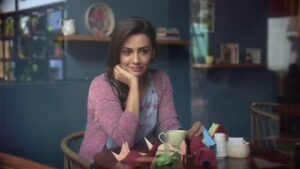 While in the office, with a hot cup of tea in their hands, Sunetra sat listening to the history of the Kuchipudi dance form, as narrated to her by Anandi and Ambujam.
While in the office, with a hot cup of tea in their hands, Sunetra sat listening to the history of the Kuchipudi dance form, as narrated to her by Anandi and Ambujam.
There are eight major classical dances in India, Kuchipudi, with its origin in the Kuchipudi village in Andhra Pradesh is one of them. The ancient roots of this dance drama lies in the Natya Shastra, the ancient Vedic Sanskrit text. Like all the other Indian classical dance forms, this one is also a form of religious art.
The Kuchipudi dance form is extremely old. Evidence of it lies in the copper inscriptions which can be dated back to the 10th Century. There are also texts from the 15th Century, like the Machupalli Kaifat. Traditional Kuchipudi dance was performed by the all-male troupes. These men were also only Brahmins. They moved from one village to another and performed for the village folk.
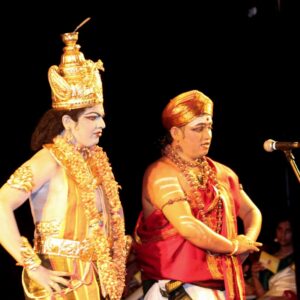
Anandi had turned on her recorder with the permission of the couple as she found it hard to write so much and didn’t want to disturb their flow of speech. She leaned forwards in curiosity, and listened with utmost attention and silence as they continued talking.
The roles of the females were also played by the males. As it developed and grew, it became available to both male and female dancers, and currently, female Kuchipudi dancers have outnumbered the males. In the older days, when the only people performing in the Kuchipudi dance drama were males, the costume included only be wearing a single pleated ‘dhoti’. This costume is also known as the ‘Bagalbandi’ or ‘Angivastra’. The females would have light make up on their faces and dance in a saree. In some cases, now the opposite happens as the girl artists now dress up as males to perform the male roles.
The traditional dance form Kuchipudi, which is also the favourite of dance form of Lord Krishna, begins with an invocation, followed by all the dancers introducing themselves with respect to the roles they are playing. After this, they perform a short dance set to a music called ‘Dharavu’ and then present the pure dance performance along with the rhythmic hand gestures for the story. It is one of the most popular dance forms in India and has seen huge growth throughout the years. Kuchipudi is now performed not just in India, but worldwide as well.
The costumes are also one of the most important parts of Kuchipudi dance form. It is a team dance performance, which has originated from the religious festivals of the country. This drama-dance consists of very extensive dance movements and precise footwork, the underlying drama is given expression through the hand gestures (mudras) and the expressions on the faces of the dancers, made by their face and eye movements. These face and hand expressions have been derived from the sign language that extensively follows the classical Sanskrit texts like Nrityararnavali, Abhinaya Darpana and Natya Shastra.
The dance is also accompanied by Carnatic style music. The hand gestures in Kuchipudi dance are a lot similar to that of Bharatnatyam. But there are also some pretty big differences, for example, Bharatnatyam is a temple tradition whereas Kuchipudi is a festival tradition of the culture, making the former more spiritual and the later more along the line of folk dance.
Similar to most of the Indian classical dances, based on the ancient, Sanskrit Natya Shastra, there are three categories of dances in Kuchipudi too; these are Nritta, Nritya and Natya.
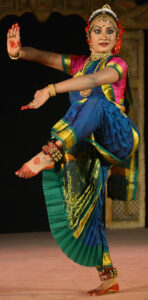 Nritta is the abstract. It is the rhythmic and fast aspect of Kuchipudi. The movements in this part of the dance focus completely on the purity, beauty in motion, speed, range, form and pattern of the dancers. This part has no story telling in it; its main focus is to engage the attention and senses of the audience. The next category is Nrittya, which is the slower and more expressive aspect of the dance. It attempts to communicate to their audience the storyline, feelings and the spiritual themes of their dance drama. Nrittya includes silent dancing where the expressions of the face, hand gestures and body movements form the centre of attention. It gives the audience sensory enjoyment and engages their mind and emotions. The last part in this sequence is the natyam. In Natya, the drama underlying the performance is brought into focus.
Nritta is the abstract. It is the rhythmic and fast aspect of Kuchipudi. The movements in this part of the dance focus completely on the purity, beauty in motion, speed, range, form and pattern of the dancers. This part has no story telling in it; its main focus is to engage the attention and senses of the audience. The next category is Nrittya, which is the slower and more expressive aspect of the dance. It attempts to communicate to their audience the storyline, feelings and the spiritual themes of their dance drama. Nrittya includes silent dancing where the expressions of the face, hand gestures and body movements form the centre of attention. It gives the audience sensory enjoyment and engages their mind and emotions. The last part in this sequence is the natyam. In Natya, the drama underlying the performance is brought into focus.
Traditionally, the Kuchipudi dance dramas were performed during the nights. Since it was originally performed in the villages beside a temple, the timing was made to favour the people of the village who after their long day of work could come to enjoy the performance and relax.
In the modern days, the costume has seen several changes. The male attire has remained the same over the time, however, the female attire has become more elaborate and more like the Bharatnatyam style. The sarees have become more body fitting and colourful and there is a pleated fan now in the front so that the footwork is properly visible to the audience. There is also a belt made of a light metal at their waist.
 Their hair is also braided in a traditional manner with flowers in them. The hairstyle expresses the tribhuvana style which is a symbol of the three worlds from the religious myths of Vedic history. The face jewellery and hair style is also an indication of the Vedic symbols for the moon and sun. The jewellery adorning them include ear rings and nose rings, armlets, ghungroo and necklaces. Their eyes are highlighted with black collyrium and there is also a round bindi on their heads.
Their hair is also braided in a traditional manner with flowers in them. The hairstyle expresses the tribhuvana style which is a symbol of the three worlds from the religious myths of Vedic history. The face jewellery and hair style is also an indication of the Vedic symbols for the moon and sun. The jewellery adorning them include ear rings and nose rings, armlets, ghungroo and necklaces. Their eyes are highlighted with black collyrium and there is also a round bindi on their heads.
In some special Kuchipudi plays, the attire has evolved, giving the dancers a different look. This can be seen in the unusual costumes of the females where they are made to carry round bottomed water pots made of clay which they balance on their head while dancing with stilt athletics and gymnastics. Some other props also used include peacock feathered crown, wing props, and transparent head sheets while playing the role of Lord Krishna.
Thamburi, Cymbals, Mridangam, violin and flute are the major musical instruments used by the conductor, also known as the chief musician of the play. This chief musician, in the original terms of Kuchipudi, is also known as the Nattuvanar or Sutradhara. Their job is to maintain the beats with the help of the Cymbals as well as reciting the music syllables. In case there is an absence of a separate vocalist, the Nattuvanar may also be seen singing out the spiritual message or the story which the group or solo artist is trying to convey through the dance drama. The group of Kuchipudi orchestra includes a drummer, who is also called a Mridangam, a clarinettist and finally, a violinist. This line up may differ based on the kind of dance drama that they are representing.
There was a different kind of glow in Ambujam and Anandi’s faces. Sunetra could easily tell that they were also immensely passionate about the dance form. The enthusiasm in their voices made her lips curl up slightly as she listened to them speaking about the dance form more.
The gurus of Kuchipudi dance form have shown their creativity through the development of the various regional banis or styles. This flexibility, allowing the dancers to show their creativity through their talent and dance has been a key feature of all the Indian classical dance forms. This can be seen even in the earlier times of Kuchipudi, for example, in the Margi and Desi styles as written in the text Nrittaratnavali by Jaya Senapati.
There are several standard treatises like the Abhinaya Darpana, and Bharatarnaba by Nandikeswara on which the dance styles are based. These are subdivided into the Natya Mala and the Nattuva Mala. Natya Mala can be classified into three groups – Bhagavatam to be performed in common places, Kalika to be performed for intellectuals and the ritual dance to be performed for the gods. Nattuva Mala can now further be divided into two groups, one of them being the Puja dance which is performed in the temples and the Kalika dance which is performed in Kalyana Mandapam.
“This is all so overwhelming. It gives me so much pride and happiness to see how much the Kuchipudi culture has developed over the years,” Sunetra wondered out loud, making the couple smile.
“There is so much depth in the whole history of this classical dance, there is so much to learn and its never enough.”
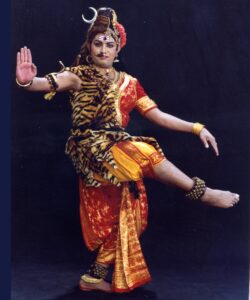 While speaking of the Kuchipudi dance dramas, the couple had also decided to spread some light over the famous dance dramas. The first one that they mentioned is the drama called Bhama Kalapam by Sidhyendra Yogi, which Sunetra saw just a few minutes ago. The second Kuchipudi dance drama is the Krishna Lila Tarangini composed by Narayana Teertha, a story about the life of Lord Krishna until his marriage to Rukmini. Another Kuchipudi drama, Golla Kalapam written by Ramaiah Sastri after he gained inspiration from the Bhama Kalapam. It is based on the theme of a satirical and ethical conversation which took place between a Brahmin and Gopi.
While speaking of the Kuchipudi dance dramas, the couple had also decided to spread some light over the famous dance dramas. The first one that they mentioned is the drama called Bhama Kalapam by Sidhyendra Yogi, which Sunetra saw just a few minutes ago. The second Kuchipudi dance drama is the Krishna Lila Tarangini composed by Narayana Teertha, a story about the life of Lord Krishna until his marriage to Rukmini. Another Kuchipudi drama, Golla Kalapam written by Ramaiah Sastri after he gained inspiration from the Bhama Kalapam. It is based on the theme of a satirical and ethical conversation which took place between a Brahmin and Gopi.
Some of these traditional compositions have also received international recognition as several Kuchipudi artists have performed among the Telugu diaspora communities, which include the dramas called Rukmini Kalyanam – the marriage of Krishna and Rukmini, Srinivasa Kalyanam, Hara Vilasam, Sakuntalam Bhamakalpam, Prahlada Charitram – a play based on holi, Sasirekha Parinayam, Usha Parinayam. Rama Natakam – the oldest known Kuchipudi play, Chamundeswaru Sabda, Perini Thandavam, Ardhanareeswaram Sabda and finally, Mohini Rukmangada.
Sunetra listen to the couple speaking with utmost attention and with wonder in her eyes.
They smiled at her, “It is very appealing that you are so interested in the classical Indian dance forms. It is very uplifting that the youth is still interested in these things,” Ambujam said.
Sunetra smiled sadly, “I was a dancer myself,” her hands started rubbing her left knee gently, “Due to some circumstances I had to give it up. However, it is still my passion. I wondered about the other ways of pursuing it even if I couldn’t dance anymore.”
“That’s a very good thing you did. I am glad you found a way to stay connected to your passion.”
“Me too.”
“So, for how long are you here?” Anandi asked.
“I am leaving for Orissa tomorrow.”
“Great!” she said enthusiastically, “Then you can go with us to our A&A Dance Studios and witness their training and practise yourself.”
Sunetra’s eyes started glowing with excitement, “I would love that.”
Setting off the sofa, Sunetra walked with them to their car, all the while discussing the dance dramas.
While returning from the A&A Dance studios, Sunetra had bought a book on the Odissi dance form, hoping to learn some things about the dance form by herself before she travelled to her next stop.
![]() — by Srishti Bhattacharyya
— by Srishti Bhattacharyya

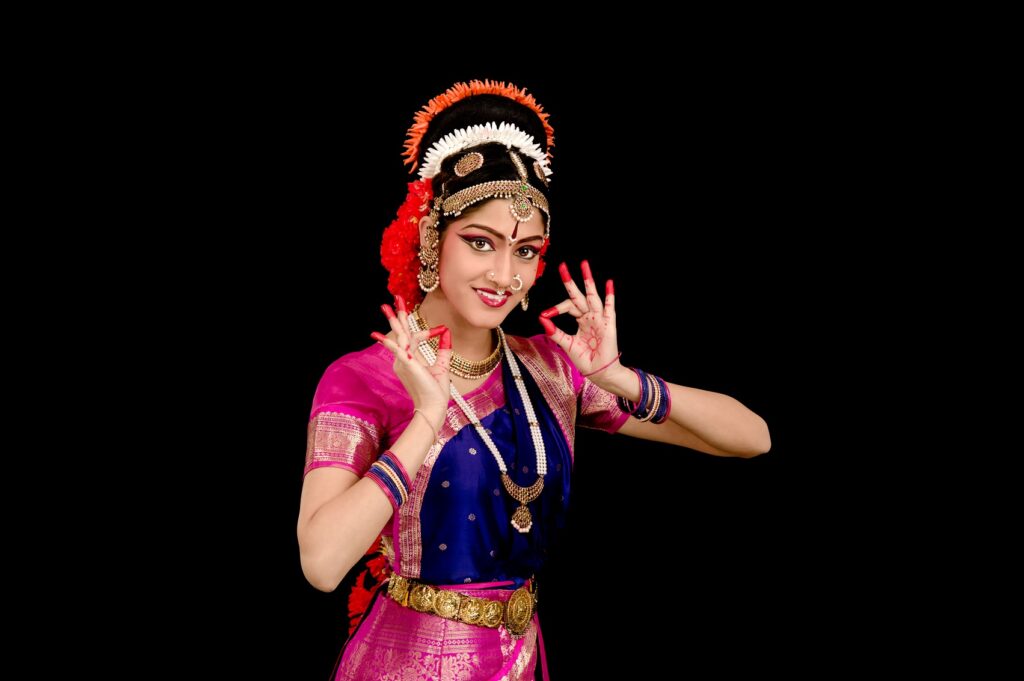
Very informative n nicely written